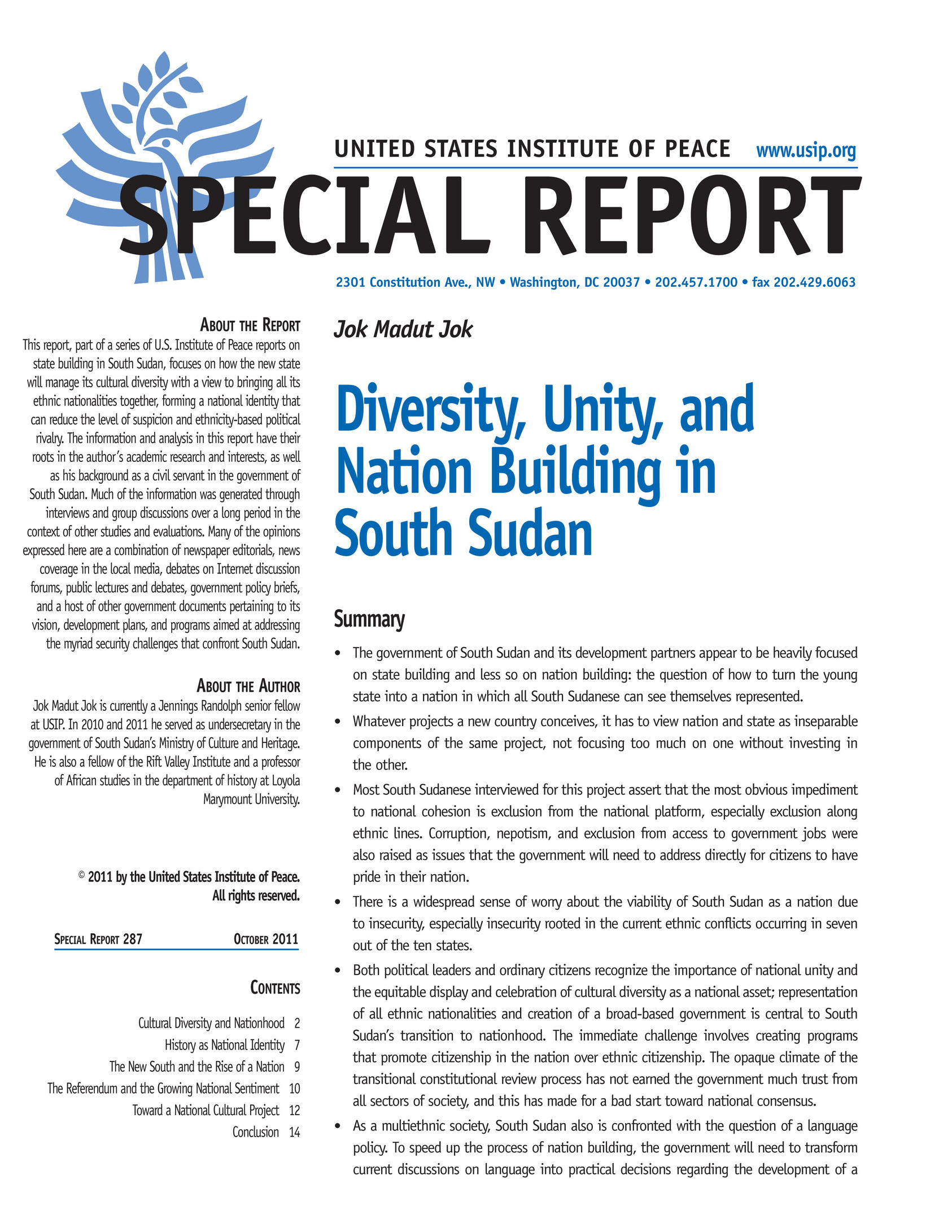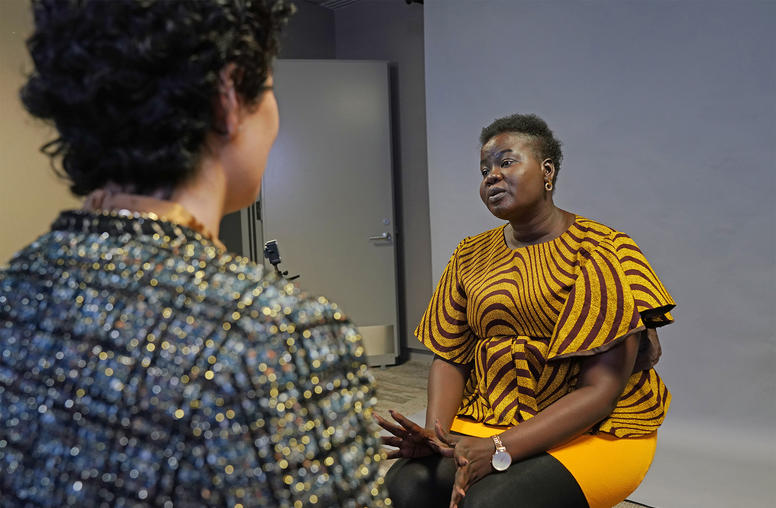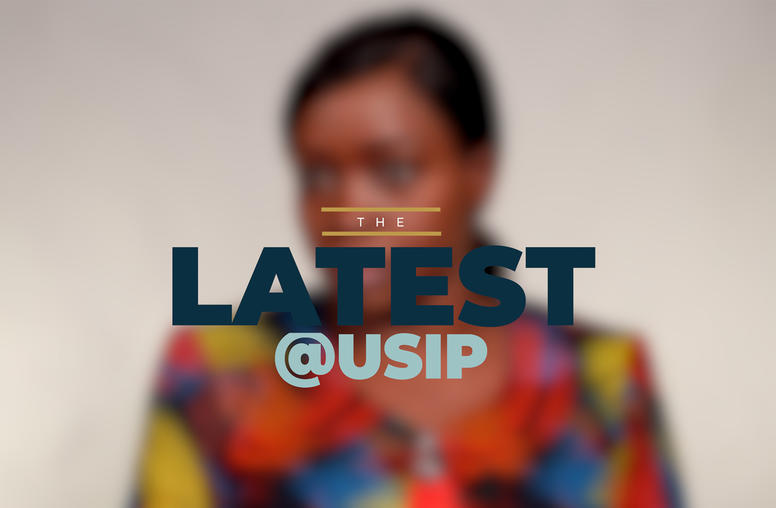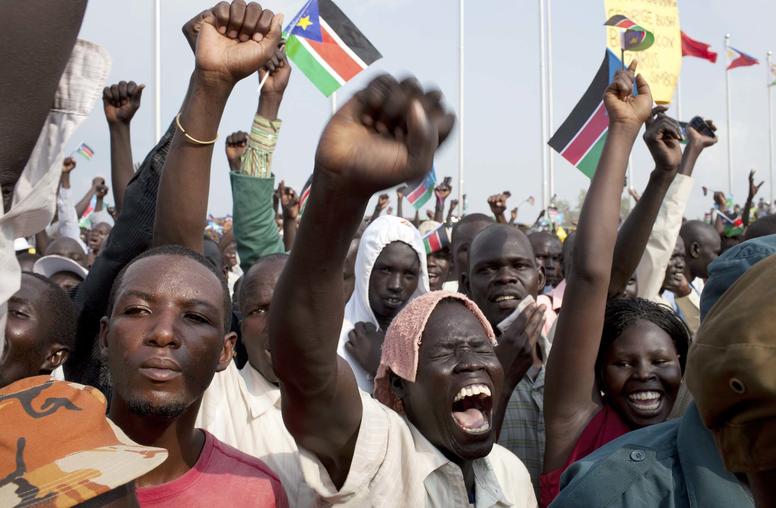Diversity, Unity, and Nation Building in South Sudan
South Sudan’s success as a nation depends on getting its many distinct ethnic groups to promote, teach, and celebrate a shared cultural heritage. In this new Special Report, USIP Senior Fellow and former South Sudan government official Jok Madut Jok urges concrete steps toward creating a national identity.

Summary
- The government of South Sudan and its development partners appear to be heavily focused on state building and less so on nation building: the question of how to turn the young state into a nation in which all South Sudanese can see themselves represented.
- Whatever projects a new country conceives, it has to view nation and state as inseparable components of the same project, not focusing too much on one without investing in the other.
- Most South Sudanese interviewed for this project assert that the most obvious impediment to national cohesion is exclusion from the national platform, especially exclusion along ethnic lines. Corruption, nepotism, and exclusion from access to government jobs were also raised as issues that the government will need to address directly for citizens to have pride in their nation.
- There is a widespread sense of worry about the viability of South Sudan as a nation due to insecurity, especially insecurity rooted in the current ethnic conflicts occurring in seven out of the ten states.
- Both political leaders and ordinary citizens recognize the importance of national unity and the equitable display and celebration of cultural diversity as a national asset; representation of all ethnic nationalities and creation of a broad-based government is central to South Sudan’s transition to nationhood. The immediate challenge involves creating programs that promote citizenship in the nation over ethnic citizenship. The opaque climate of the transitional constitutional review process has not earned the government much trust from all sectors of society, and this has made for a bad start toward national consensus.
- As a multiethnic society, South Sudan also is confronted with the question of a language policy. To speed up the process of nation building, the government will need to transform current discussions on language into practical decisions regarding the development of anational language. Identifying five national languages that represent the three greater regions of the country would be one way to approach it.
- Ultimately, a viable South Sudan has to stand on four strong pillars: political unity, a disciplined military, quick and equitable service delivery, and a vibrant civil society.
About the Report
This report, part of a series of U.S. Institute of Peace reports on state building in South Sudan, focuses on how the new state will manage its cultural diversity with a view to bringing all its ethnic nationalities together, forming a national identity that can reduce the level of suspicion and ethnicity-based political rivalry. The information and analysis in this report have their roots in the author ’s academic research and interests, as well as his background as a civil servant in the government of South Sudan. Much of the information was generated through interviews and group discussions over a long period in the context of other studies and evaluations. Many of the opinions expressed here are a combination of newspaper editorials, news coverage in the local media, debates on Internet discussion forums, public lectures and debates, government policy briefs, and a host of other government documents pertaining to its vision, development plans, and programs aimed at addressing the myriad security challenges that confront South Sudan.
About the Author
Jok Madut Jok is currently a Jennings Randolph senior fellow at USIP. In 2010 and 2011 he served as undersecretary in the government of South Sudan’s Ministry of Culture and Heritage. He is also a fellow of the Rift Valley Institute and a professor of African studies in the department of history at Loyola Marymount University.



